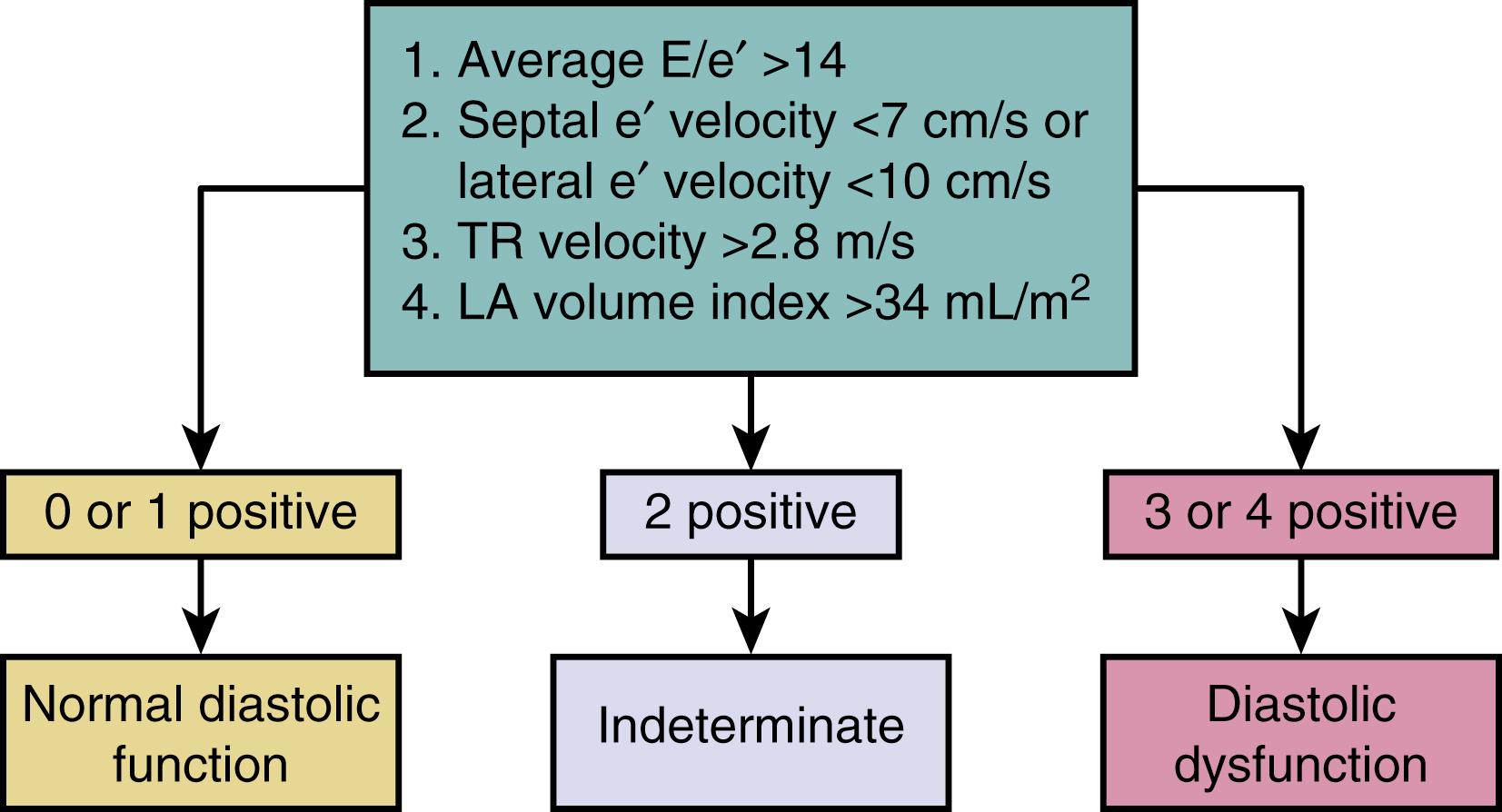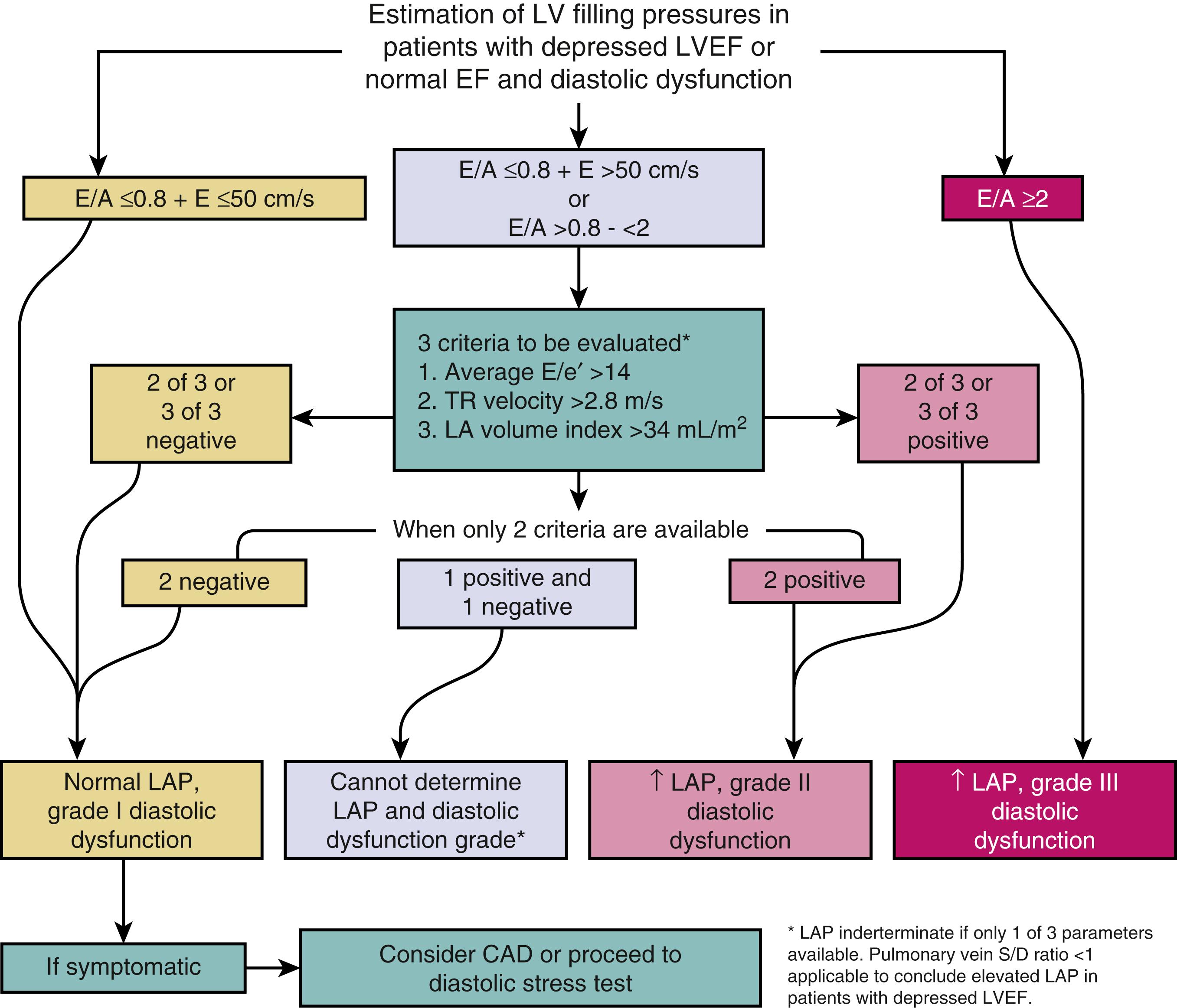Physical Address
304 North Cardinal St.
Dorchester Center, MA 02124
Many patients are referred to the echocardiography laboratory with complaints of dyspnea. These include patients with normal and depressed left ventricular (LV) ejection fraction (EF). It is important to determine whether symptoms in these patients have a cardiac cause or not because this can have therapeutic implications for decisions that include the use and titration of diuretics. Of note, many patients with LV systolic dysfunction have normal LV filling pressure and have dyspnea from noncardiac causes. Therefore, one should not rely solely on LVEF to draw inferences about LV filling pressures.
A comprehensive echocardiographic examination is essential for reaching the correct diagnosis. This includes acquisition of satisfactory two-dimensional (2D) and Doppler signals, including mitral inflow, pulmonary venous flow, pulmonary regurgitation (PR) and tricuspid regurgitation (TR) peak velocities by continuous-wave (CW) Doppler from multiple windows, and mitral annulus velocities by tissue Doppler (TD). For patients who can perform a Valsalva maneuver, the change in mitral inflow pattern may be helpful in identifying patients with increased LV filling pressures. The inflow pattern in these cases changes from pseudo-normal filling to an impaired relaxation pattern. In addition, in some cases, flow propagation velocity (Vp) and untwisting measurements can provide useful insights into the mechanisms behind diastolic dysfunction, though they are usually not needed in day-to-day clinical applications. , On the other hand, there is growing interest in the clinical applications of LV diastolic strain rate during the isovolumic relaxation period and during early diastole, as well as left atrial (LA) reservoir strain. Echocardiographic Doppler parameters of diastolic function are discussed in detail in Chapter 35 .
In 2016, the American Society of Echocardiography (ASE) and the European Association of Cardiovascular Imaging (EACVI) published an updated diastolic function assessment guidelines document with the objectives of simplifying the approach and decreasing the interobserver variability in determining LV filling pressure and grading LV diastolic function. Emphasis was placed on fewer variables, namely (1) mitral inflow velocities, (2) biplane LA maximum volume, (3) peak tricuspid regurgitation (TR) velocity, and (4) mitral annulus early diastolic velocity (e′) at the septal and lateral sides of the mitral annulus.
The guidelines emphasized the importance of taking the clinical context into account, as well as other 2D and Doppler findings. The writing group recognized the coexistence of LV systolic and diastolic dysfunction in most patients with cardiac disease. This relation highlights the importance of identifying LV systolic dysfunction, whether it is with LVEF or global longitudinal strain (GLS). Other indicators of myocardial disease and diastolic dysfunction include pathologic LV hypertrophy and LA enlargement in patients with hypertension or aortic stenosis in the absence of atrial fibrillation and mitral valve disease. Likewise, segmental dysfunction in patients with coronary artery disease (CAD) is often associated with diastolic dysfunction. Specific Doppler signals that by themselves are indicative of abnormal elevated LV filling pressure include the change in mitral inflow pattern with Valsalva as described earlier, the presence of pathologic middiastolic L wave in mitral inflow (≥50 cm/s), increased amplitude or duration of pulmonary vein atrial wave (Ar), and discordant mitral inflow and tricuspid inflow. In patients with normal intravascular volume and filling pressure, right ventricular (RV) inflow and LV inflow are concordant in that predominant early diastolic filling of RV and LV occurs. However, when there are LV diastolic dysfunction and elevated LA pressure but still normal mean right atrial (RA) pressure, the tricuspid E/A ratio is less than 1, whereas the mitral E/A ratio is greater than1.
The ASE/EACVI guidelines provide two algorithms for assessment of LV diastolic function and filling pressures. Algorithm A is for patients with normal LVEF and no myocardial disease ( Fig. 36.1 ), and algorithm B for patients with depressed LVEF and patients with myocardial disease and normal LVEF ( Fig. 36.2 ).


This algorithm applies to subjects with normal LVEF and no myocardial disease (see Fig. 36.1 ). In the absence of myocardial disease and in situations when it is not possible to determine if myocardial disease is present, the 2016 guidelines update recommends relying on four signals: septal and lateral e′ velocities, average E/e′ ratio (based on average of septal and lateral e′ velocities), peak TR jet, and biplane LA maximum volume index. Based on the number of available variables indicative of diastolic dysfunction (variables with values that met or exceeded the cutoff values), one of three conclusions is reached: normal, abnormal, or indeterminate diastolic function. The proportion of cases with indeterminate diastolic function is lower in laboratories that acquire more complete datasets and that take into account all clinical, 2D, and Doppler findings.
Become a Clinical Tree membership for Full access and enjoy Unlimited articles
If you are a member. Log in here